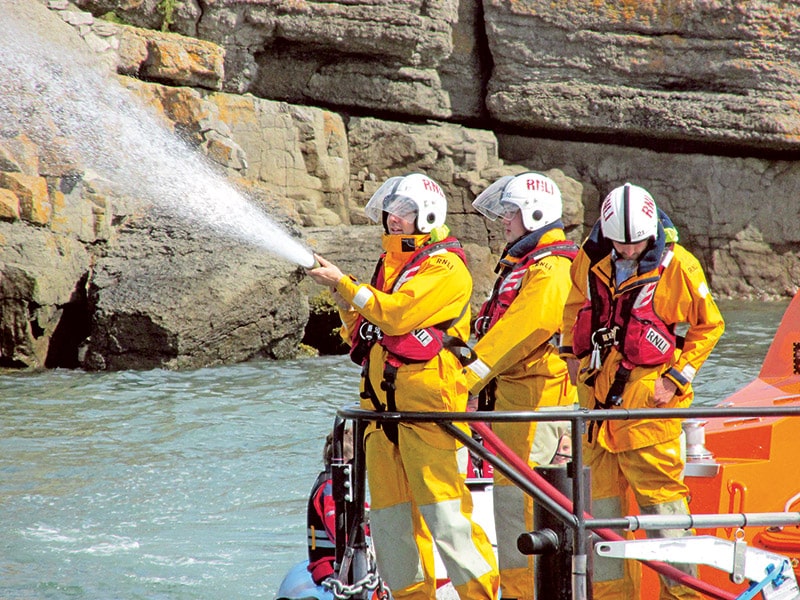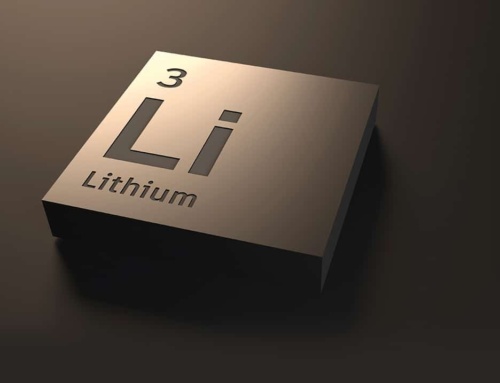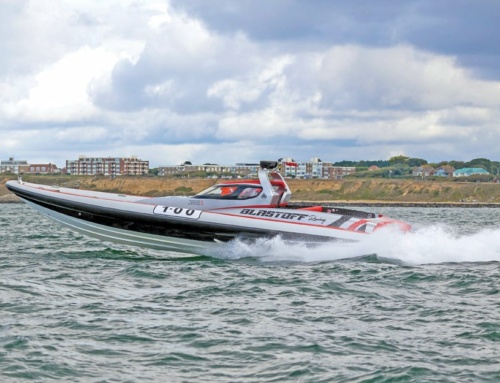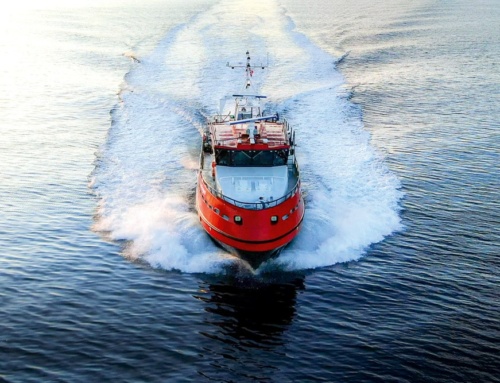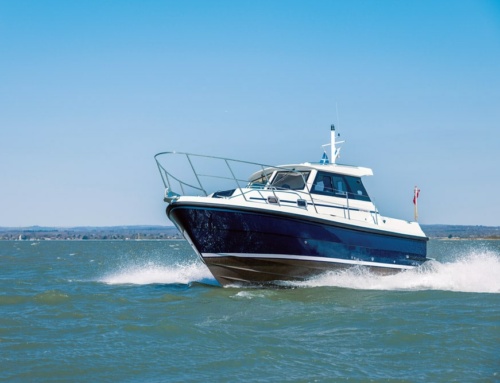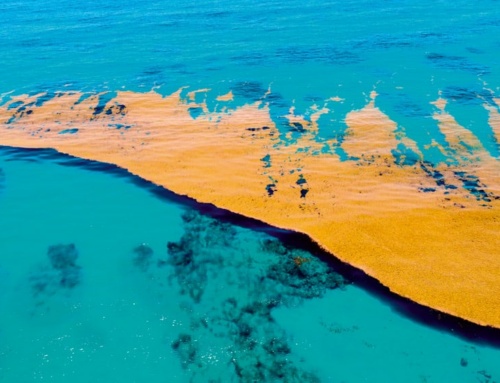- Modern computer-controlled, fly-by-wire systems allow control of the boat to be transferred between crew without anyone having to leave their seats.
- In one way these modern boats preserve part of their ancestors’ designs, and that is the ability to operate the boat from outside the wheelhouse.
- No amount of technology can make up for a helmsman having an uninterrupted 360-degree field of view …
- It is hard to believe that anyone would put to sea in such horrendous conditions, but go they did.
Jonathan Peers reflects on the selfless courage of RNLI crews that peppers the history of the Moelfre Lifeboat, and in particular the story of a true hero, Richard ‘Dick’ Evans …
The spine-tingling noise of maroons being fired may have long since disappeared from our shores, and the double-ended wooden 8-knot open lifeboats consigned to the history books, but that doesn’t mean that the magic has gone. Yes, those chest-pounding booms from the maroons (a pair of rockets fired to summon the lifeboat crew and signal to a casualty that help is on its way) may have been replaced by the soulless beeping of a pager, and the boats replaced with state-of-the-art composite, fully enclosed, 25-knot all-weather beasts, but the lifesaving spirit is still very much alive, not just among the crews but throughout the towns, which feel so proud to have their own lifeboat.
Moelfre, on the eastern side of Anglesey, North Wales, has very good reason to be proud of its lifesaving heritage, for this was the home of a true hero, Richard ‘Dick’ Evans. Being born in the village in 1905 and attending the local school meant that Dick and his schoolmates were never far from the sea. Entertainment at that time was found in playing a game of identifying the ships that would seek shelter in the lee of the island, and trying to guess what cargo these fine sailing and steam vessels would have on board. It’s no surprise, then, that at the age of 14 he packed his bag and followed his dreams by becoming a merchant seaman. All was not as imagined for the young Welshman – the work was hard, and the conditions on board were worse than those endured by a caged animal. More striking for the young mariner was the loneliness of homesickness – unsurprising, really, for someone who had rarely strayed far from the village in which he was born.
Despite the hardships, Dick knew that this was the life for him, and he pushed hard to develop his own abilities and prove his worth. At the age of just 23, he was appointed master of a motor-driven coaster called Colin.
Obviously, the majority of Dick’s time was spent away from home, but even when home on leave, Dick couldn’t be kept away from the sea, for the call of the lifeboat beckoned. In those days the lifeboats were powered by sails and oars – an image that may at first seem romantic, but the reality of which was quite different. A group of men tasked with taking a heavy, open boat in freezing rain and mountainous seas, pulling on oars with all their might for hours on end dressed in crude oilskins at best, is something that is hard to even imagine in a modern world. It was hardly a glamorous job, and yet it was one that was never short of volunteers.
Just as Dick’s professional seafaring career was gaining momentum, pressure from his family saw him give up on his dream in order to run the family butcher’s shop in the village. Dick’s reluctance was clear – the sea was calling him, and it hurt to be kept away from it. The one thing that being tied to the village did offer Dick was the opportunity to spend much more time on the lifeboat – a cause that he was already so passionate about, but also one that helped to ‘scratch the itch’ and afford him that much yearned-for sea time.
From the role of bowman, Dick became second coxswain in 1939 at the start of World War II. In 1940, after the rescue of 60 crewmembers from the torpedoed steamer Gleneden, he was awarded the RNLI’s thanks inscribed on vellum. A bronze medal followed in 1943 for the rescue of three airmen from a crashed bomber.
Fifteen years as second coxswain meant that in 1954 he was the obvious choice for the coxswain’s role. Five years later, Dick was to be awarded the RNLI’s highest award – the gold medal, considered by many as the lifeboat Victoria Cross.
October 27th 1959 was to be the day. A 506-ton coaster from Cardiff named Hindlea was dragging her anchors in a storm 2 miles north of Moelfre. As the winds shifted from south-westerly to northerly, the storm turned into a hurricane, with winds of 104mph and wave heights of 25 feet recorded. With the Hindlea heading for the rocks, the lifeboat was to be launched. As Dick arrived at the station he found other members of the crew already there. This was not a full crew, nor the most experienced, but Dick did not have the luxury of being able to handpick his finest men. The phone lines around the village had been downed by the storm, and he knew that the maroons would be useless in summoning other crewmen to the boathouse. With time for the Hindlea’s crew rapidly running out, the decision was made to launch.
Now, Moelfre’s regular lifeboat at the time was the Watkin Williams, a twin 48hp diesel-engined Watson class. At 42ft long and weighing 17.2 tons, you can appreciate just how underpowered these old boats were, achieving a painfully slow 8.5-knot top speed. For this rescue, however, Moelfre had on station a relief lifeboat by the name of the Edmund and Mary Robinson. This was also a Watson class, though slightly smaller and with even less power.
It is hard to believe that anyone would put to sea in such horrendous conditions, but go they did. After an hour and a half the lifeboat eventually reached the Hindlea, but with his unfamiliar boat being powered by two petrol engines of just 35hp each, it took every bit of skill and physical strength to simply keep her head on into the seas.
The sight that met the crew must have been nothing short of terrifying – a large ship being tossed about like a toy boat in a bath, pitching and rolling, tugging violently on her anchors, all the while exposing her spinning propeller at her stern. Regardless of the conditions, there was only one thing that mattered to Dick, and that was that this ship was doomed, and there was a crew to be saved. Ten times he took the lifeboat alongside, each time battling the seas and saving his boat from certain capsize before rescuing all the Hindlea’s crew. At this point, both vessels were a mere 100 yards from the rocks that would soon ravish the Hindlea.
Returning to the station, the coxswain sat, totally exhausted, on the slipway and cried. These he realised were tears of joy at the knowledge that he and his crew, despite all the odds, had saved eight men from certain death.
Only an hour after enduring such a punishing rescue, the lifeboat was to be called out again. This time they were to stand by a drifting tanker off Point Lynas, on the north-eastern tip of Anglesey. Again they took a battering but eventually they were able to return to station. Dick sent his crew home but remained at the boathouse with his mechanic, Evan Owen, where they spent the entire night trying to repair the lifeboat.
At 6am the next day the call came from the coastguard to assist once again with the tanker from the day before. Upon firing the maroons, Dick was amazed to see the very same four crewmen arrive at the station. They stood by the tanker until a tug arrived, before returning once again, beaten, battered and exhausted, but ultimately still alive to be able to tell the story.
There are books available that tell the stories of the rescues carried out by not only Dick Evans but by all the Moelfre lifeboats in much more detail than I can fit into these pages. Numerous awards were granted to other crewmembers, and Dick himself would later be awarded a second gold medal for his role in the rescue of the crew of the Greek vessel Nafsiporos, a rescue that would involve three lifeboats and last for 24 hours.
Stories such as the Hindlea rescue are what fuel the imagination when we think of our coastal rescue services. Times may have changed, with a shift in balance towards callouts to leisure craft, but big rescues in adverse conditions have certainly not been consigned to the history books. The desperation of anyone in peril at sea is something that the majority of us can only try to imagine, and I think that it is by trying to put ourselves in such a position that we find it compelling to support these brave crews, even if all we can do is throw some loose change into the collection tin.
Moelfre Lifeboat Day
The pride that each seaside town feels toward its lifeboat is quite overwhelming, and Moelfre, of course, is no exception. Every year they close off the road and throw open the doors to visitors from far and wide, all in the spirit of fund-raising for the RNLI. For those visiting by road, parking is provided outside of the village. From here you can either cash in some pudgy points and walk down the hill or take advantage of the free shuttle bus service put on by the local bus company. This bus literally spends all day driving up and down the main road into Moelfre carrying visitors to and from the temporary car park.
Entering the village, you are met with street stalls selling all manner of different foods and gifts, along with the sound of live entertainment filling the air. When a local samba-reggae drumming group, Batala Banga, strikes up, the place takes on a carnival atmosphere. Watching this group dancing along the road enthusiastically beating their drums is actually quite mesmerising!
Strolling through to the other side of the village, you find yourself walking along the headland that leads to the lifeboat station. This is where you will get the best view of the action, and the landscape of this headland lends itself perfectly to use as a large tiered sitting area. From here you can admire all the visiting boats before watching the lifeboat launch for its demonstration.
Of course, if you want a true front-row seat for the demonstration I can highly recommend visiting by boat. I always rave about the Anglesey coastline, and with good reason. With stunning scenery and plenty of wildlife to spot along the way, it’s a boater’s paradise. Couple this with the numerous locations from which to launch, and you can choose for yourself whether to have a short hop round to Moelfre or enjoy a mini cruise from further away and make a day out of the event.
The obvious choice for launching is from somewhere along the Menai Straits. Of course, if you are relatively new to boating, or just new to Anglesey, you may be tempted to launch at the nearest point. But why not reach out instead to the local boating community – a friendly bunch, easily found on the usual social media sites and online forums. This group of intrepid mariners regularly launch from Caernarfon, and are well used to navigating the treacherous waters of the Menai Straits. If approached in a friendly manner, they will happily guide you through places such as the Swellies – the notorious rock-strewn, eddy-filled stretch of water between the two bridges linking Anglesey with the mainland – before avoiding the sandbanks on the run out to Puffin Island.
I myself launch from the opposite side of the island at Penrhyn Bay Caravan Park, as it has its own slipway, but just over the water is Holyhead harbour, where you can find the free council slipway close to the coastguard station. Launching here means a long cruise in a clockwise direction, but taking in the Skerries lighthouse and the old ruined brickworks at Porth Wen reaps its own rewards.
Arriving at Moelfre by boat, you are met by what appears to be a free-for-all of boats and jet skis flying around clamouring for the attention of the watching crowds on shore. The bay itself is large enough for everyone, and you would be well advised to find a quiet spot from which to watch the proceedings.
Moelfre Lifeboat Day is actually a land-based event, having started over 50 years ago as a village festival promoting local producers, but as the years passed the lifeboat was included as a worthy cause in need of support. As a land-based event, the organisers have very little control over the visitors who arrive by sea, and unfortunately there is always a small number of powerboaters and jet-skiers who decide to act dangerously. Antics including jet skis using anchored boats as a slalom course, and powerboats spinning raised propellers, all while families are seen pottering about in small boats without even basic safety equipment, are all common sightings. If you do visit, then please bear this in mind – in a modern world full of litigation, it would only take one fatality as a result of someone’s foolish actions to put an end to this long-running event. The organisers have a small number of marshals out on the water, whose job it is to keep all visiting craft away from the lifeboat during its demonstration. Please give them the respect they deserve, stay out of the buoyed-off area and enjoy what is in itself a spectacular event.
The display
Of course, the display starts with the launch itself, and as the only slipway-launched lifeboat in North Wales, it’s a spectacle you’d have to travel far for to see elsewhere. Seeing a lifeboat gliding down a slipway, burying its bow as it hits the water before heading out to sea, is a sight that has remained largely unchanged since the very early days of the RNLI. Moelfre’s D-class inshore lifeboat also launches down the same slipway, but rather than a runaway boat splashing into the sea, this is lowered to the water on a special carriage attached to a winch cable.
With both boats in the water, they waste no time and quickly start to show off their own boat’s abilities while performing ‘rescues’. The real spectacle, of course, comes in the form of a Sikorsky S-92 rescue helicopter arriving ‘on scene’ from its nearby base at Caernarfon airport. This is the point at which the lifeboat absolutely must have clear water in which to operate, as during the demonstration, while the helicopter transfers crew using its winch, the lifeboat and helicopter have to travel on a straight course at a steady speed in order to maintain stability for both craft. Reports of the odd boat or ski trying to race the lifeboat, or jumping the wake while performing this manoeuvre, are also all too common.
Despite Moelfre’s shoreline being extremely rocky, the crew are still able to bring the lifeboat incredibly close to the shore, and even manage to bring it right into the beach for the public to get within touching distance – or better still, the crew get within striking distance of the people on the beach with their fire hose for a good old-fashioned water fight!
Modern-day lifeboat – Tamar class
The dangers presented by the sea are no different now to what they have been for centuries, but what has changed is the understanding of these dangers, and thus the development of the boats and equipment used.
Crew clothing is now lightweight and allows the wearer to move about and carry out their duties while being protected from the elements. Crews are also issued with slimline life jackets, which will not only turn an unconscious person upright, so as to lessen the risk of drowning, but also have more than enough buoyancy to be able to support the weight of a casualty as well.
We then start to compare the lifeboats themselves. The RNLI are already well on track with their plan to replace all of their all-weather lifeboats with boats that are capable of 25 knots – a huge improvement over the early 8-knot boats, and a significant one compared to the later 18-knot boats.
Moelfre’s all-weather lifeboat is a 16m, £2.7 million state-of-the-art Tamar class. The power for this 31.5-ton beast is provided by two CAT C18 diesel engines, each producing 1015hp.
A huge emphasis is now placed on crew comfort and safety – after all, a crew that isn’t battered simply heading out to a casualty is bound to perform far better, and for longer, than those from yesteryear. Every crewmember has an allocated seat within the fully enclosed wheelhouse, the seats themselves having spring-loaded suspension to absorb the shock imposed by crashing through waves. The only protection on board boats such as the Watkin Williams came in the form of a simple windscreen.
In one way these modern boats preserve part of their ancestors’ designs, and that is the ability to operate the boat from outside the wheelhouse. No amount of technology can make up for a helmsman having an uninterrupted 360-degree field of view, especially when coming alongside, or searching for a casualty.
When conditions are at their worst, all crew strap into their seats, and control of the boat is taken from within the wheelhouse. Unusually, you won’t find a steering wheel inside. Instead, both the helmsman’s and coxswain’s seats are fitted with throttle levers and a lever that controls the rudders. Modern computer-controlled, fly-by-wire systems allow control of the boat to be transferred between crew without anyone having to leave their seats. Each crewmember also has a computer screen in front of them, which allows all the boat’s systems to be monitored by all the crew, from any seat – pretty remarkable, I’m sure you would agree. The simple idea of keeping the crew seated safely as much as possible while underway has obvious safety advantages.
Passing of a legend
Dick Evans retired as coxswain on his 65th birthday in 1970. He became one of the best-known lifeboatmen in the country, even appearing on This Is Your Life on television in 1970 as well as Parkinson. He continued to represent the RNLI through his retirement, and passed away on 13th September 2001 in nearby Llangefni.
Dick Evans’s coffin was lowered into his grave to the sound of maroons being fired – and I feel there could be no more fitting tribute to a man, a legend, who devoted his life, heart and soul to saving those in peril out at sea, the poignancy being that this last ‘calling’ would be the first to go unanswered by the man himself.

